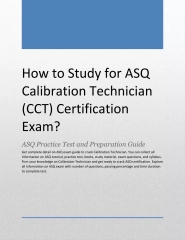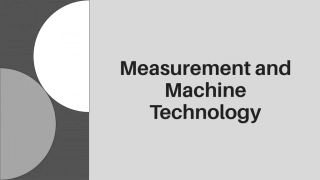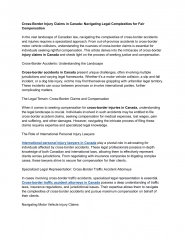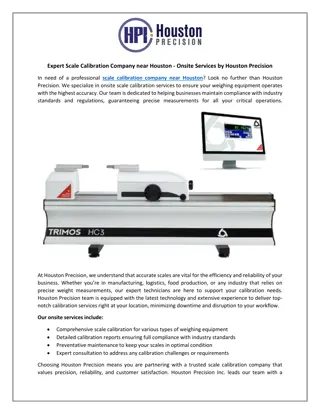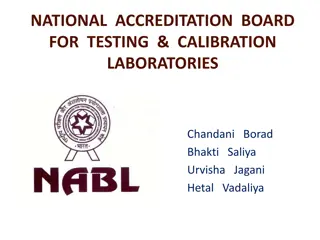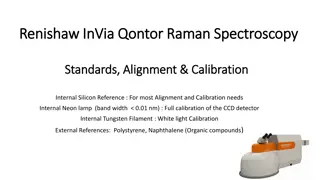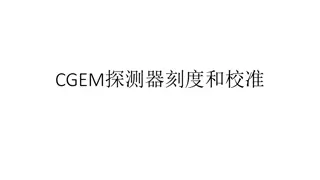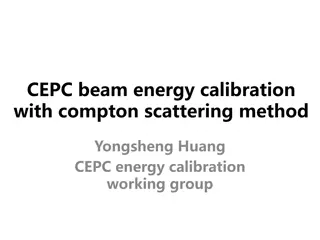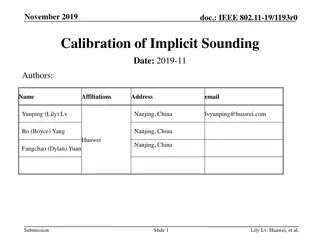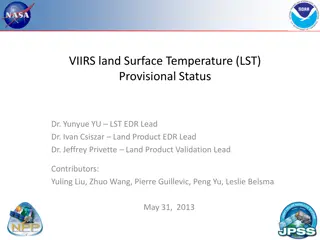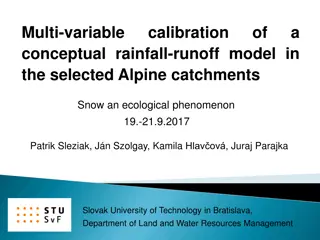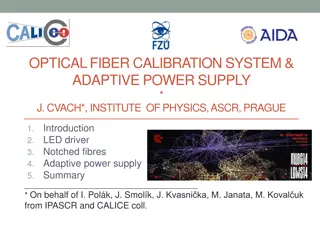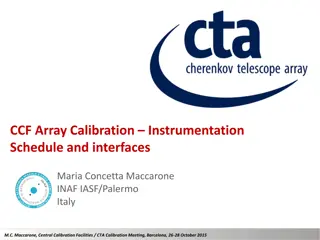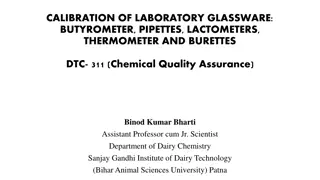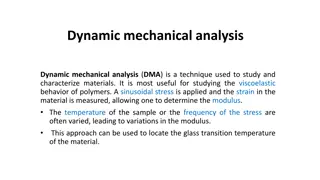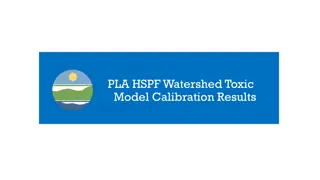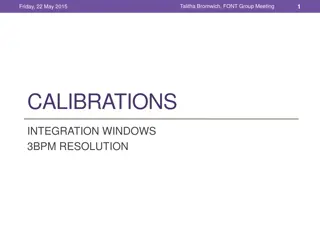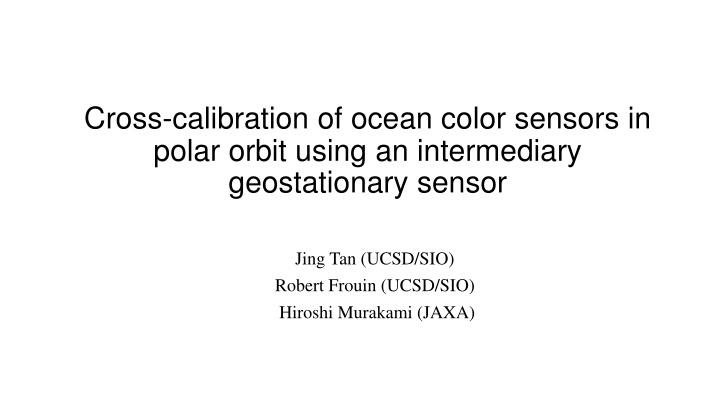
Cross-Calibration of Ocean Color Sensors Using Geostationary Intermediary
Learn about the methodology of cross-calibrating ocean color sensors in polar orbit using a geostationary sensor as an intermediary. Discover the importance of radiometric cross-calibration for consistency and climate data generation, along with techniques for spectral band matching and geometry coincidence criteria.
Download Presentation

Please find below an Image/Link to download the presentation.
The content on the website is provided AS IS for your information and personal use only. It may not be sold, licensed, or shared on other websites without obtaining consent from the author. If you encounter any issues during the download, it is possible that the publisher has removed the file from their server.
You are allowed to download the files provided on this website for personal or commercial use, subject to the condition that they are used lawfully. All files are the property of their respective owners.
The content on the website is provided AS IS for your information and personal use only. It may not be sold, licensed, or shared on other websites without obtaining consent from the author.
E N D
Presentation Transcript
Cross-calibration of ocean color sensors in polar orbit using an intermediary geostationary sensor Jing Tan (UCSD/SIO) Robert Frouin (UCSD/SIO) Hiroshi Murakami (JAXA)
Introduction -Radiometric cross-calibration of optical (e.g., ocean-color) instruments: Important activity to ensure product consistency and generate climate data records. -Defined as viewing the same radiance at the same time, but this is difficult to achieve during in flight operations of different sensors on different orbits. -Apart from viewing the Moon, one must rely on measuring the solar radiation reflected by the Earth-atmosphere system at the same time and location. -BRDF of the Earth-atmosphere system requires observing under the same solar and viewing geometry (i.e., same line of sight). -If the spectral bands to be compared do not have the same or close definition, some empirical transformation must be applied to make the cross-calibration.
Methodology -To realize the same line of sight, one may use an intermediary GEO sensor of reference. -Compared with other cross-calibration techniques (Moon, desert sites), precise coincidences in time and geometry are easier to find (i.e., more numerous). -Many coincidences occur over oceanic regions, allowing the cross-calibration to be performed at radiance levels encountered in ocean-color remote sensing. -Cross-calibration coefficients between each polar-orbiting sensor and the geostationary sensor, A1i and A2j, can be written: A1i = ref(t) / f1i[ 1i(t)] ; A2j = ref(t ) / f2j[ 2j(t )] onboard Terra and Aqua after system vicarious calibration (SVC) using AHI onboard Hiwamari-8 as intermediary sensor. Methodology was applied to cross-calibrate SGLI onboard GCOM-C and MODIS -Differences between A1i and A2j indicate that calibration of the two sensors is not consistent and, therefore, needs to be adjusted.
Spectral band matching Combinations of SGLI, MODIS-A, and -T bands used for estimating reflectance in AHI bands. AHI bands (nm) SGLI bands (nm) MODIS-A bands (nm) 443&469, 443&488, 469&488, 469 MODIS-T bands (nm) 443&469, 443&488, 469&488, 469 471 443&490 469&531, 469&547, 469&555, 488&531, 488&547, 488&555 469&531, 469&547, 469&555, 488&531, 488&547, 488&555 510 490&530 639 857 1610 672 867 1635 645, 667, 678 859, 869 1640 645, 667, 678 859, 869 1640 2257 2209 2130 2130 In general, the RMSD of spectral band matching are quite small, i.e., less than 0.7%. Only AHI 471, 510, and 639 nm are used. Longer wavelengths are not of interest due to relatively large AHI image noise and that the SVC makes assumptions about radiometric calibration in the near infrared.
Geometry coincidence Criteria to find geometry coincidence - ? < 10 min; ??, , < 1o -Adjacency, Sun glint effects minimized The mean of the reflectance ratios (with respect to AHI) is considered as the best estimate, and the associated uncertainty is calculated as ?1 the spectral matching RMSD. 2+ ?2 2 , e1=SD/ ?, e2 is If we know A/B and A/C (A is the geostationary sensor, B and C are the polar orbiting sensors), we know the cross-calibration coefficient C/B, and the associated propagated. errors can be
Results and conclusions Cross-calibration coefficients A Band combinations MODIS-A and MODIS-T after SVC are well cross- calibrated in the bands of reference, with differences of about 1% from unity, generally within the uncertainties, for all band combinations. SGLI/MODIS-A SGLI/MODIS-T MODIS-A/MODIS-T (0.991, 0.984) 0.988 0.010 A(471) 469 A(471) 443&488/443&490 (1.014, 1.014) 1.014 0.010 (1.018, 1.018, 1.008) 1.015 0.008 (1.004, 0.994) 0.999 0.006 (0.993, 0.988) 0.991 0.007 0.997, 0.991 0.994 0.009 A(471) 443&469 Proposed method is general and can be applied operationally, and to other optical sensors operating in polar orbit. It can also be performed prior to SVC, as this calibration may be SGLI shows larger cross-calibration differences, i.e., 1.4%, 3.4%, and 1.1% with MODIS-A and 1.5%, 4.6%, and 1.5% with MODIS-T, respectively. A(471) 469&488 A(510) 488&531/490&530 (1.035, 1.033) 1.034 0.010 (1.043, 1.051, 1.041) 1.046 0.008 considered as part of the atmospheric correction process. (1.008, 1.008) 1.008 0.006 (1.004, 1.009) 1.007 0.006 (1.005, 1.010) 1.008 0.006 (1.007, 1.005) 1.006 0.006 (0.999, 1.002) 1.000 0.006 (0.999, 1.005) 1.002 0.006 (1.002, 0.989) 0.995 0.007 A(510) 488&547 Cross-calibration coefficients obtained on each day are accurate (with small uncertainties), and time series allows one to observe changes in cross-calibration between polar orbiting sensors with time. Such discrepancies generated from SGLI and MODIS data, although some compensation may occur because different atmospheric correction schemes are used to process SGLI and MODIS imagery, and SVC is based on the selected scheme. differences may introduce ocean-color significant products A(510) 488&555 between A(510) 469&531 A(510) 469&547 A(510) 469&555 The methodology has great potential in the future in view of new GEO sensors, which will have improved performance and characteristics, allowing a more accurate and A(639) 645 (0.994, 0.984) 0.989 0.023 (0.999, 0.977, 0.980) 0.985 0.019 complete cross-calibration of polar-orbiting optical sensors, e.g., cross-calibrating PACE OCI with VIIRS, OLCI using GLIMR. (1.005, 0.996) 1.001 0.007 A(639) 667/672 (1.006, 1.001) 1.004 0.007 A(639) 678

